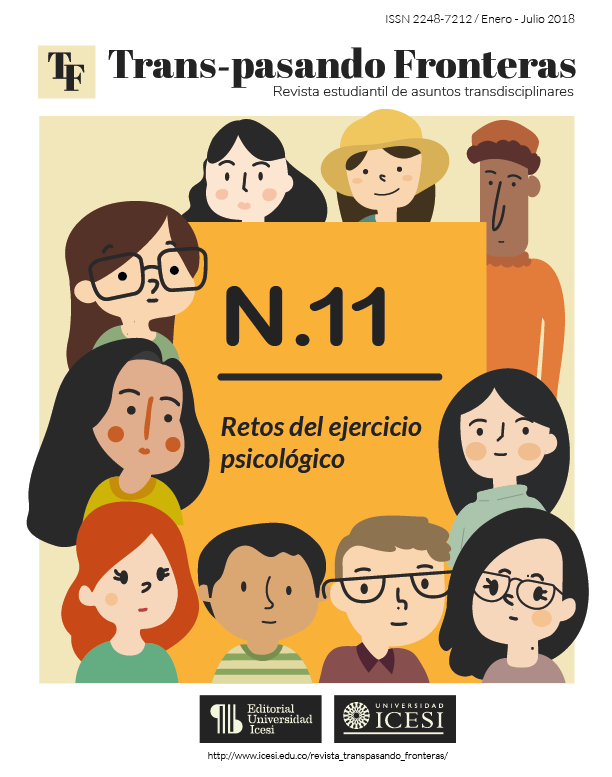Experiences and limitations in the educational intervention project the Fifth Dimension (5D): "The Mohán Club"
DOI:
https://doi.org/10.18046/retf.i11.2777Keywords:
Quinta dimensión, Aprendizaje colaborativo, Aprendizaje significativo, Comunidad de práctica.Abstract
Education has been placed as a social, economic, political and cultural issue of global relevance. For this reason, several projects have been developed oriented towards the development, improvement and intervention in education. One of these projects is the model of the Fifth Dimension (5D) founded by Michael Cole, which was adapted and implemented in the hotbed of Educational Psychology of the Icesi University, calling it the "El Mohán club" project, with the main objective of generating an intervention that would contribute to the social demands of the Playhouse "La esperanza", a space located in Siloé with which we worked together, which provides the opportunity for many children from the Siloé community to attend to see classes, perform extracurricular activities and enjoy spaces with library, game rooms, among others. This document, reflective type, condenses the experiences resulting from the adaptation of the 5D model, which contain limitations, such as the conflict that was brewing among school children, the proposal of activities that were difficult to understand, but that were used to generate a better interaction, as well as concrete reflections of each activity.
Downloads
References
Crespo, I., Lalueza, J. L., Lamas, M., Padrós, M., & Sànchez–Busqués, S. (2014). El proyecto Shere Rom. Fundamentos de una comunidad de prácticas para la inclusión educativa de grupos culturales minoritarios y en riesgo de exclusión social. Psicología, Conocimiento y Sociedad, 4(2).
Cole, M. (1999). Psicología cultural: una disciplina del pasado y del futuro. Ediciones Morata.
E. Wenger, Communities of Practice: learning, meaning, and indetity: Cambridge University Press, 1998, 45 p.
Giraldo Marín, L. M., & Atehortúa Correa, L. F. (2010). Comunidades de práctica: una estrategia para la democratización del conocimiento en las organizaciones, una reflexión. Revista Ingenierías Universidad de Medellín, 9(16), 141-150.
Guitart, M. E. (2008). Hacia una psicología cultural. Origen, desarrollo y perspectivas. Fundamentos en Humanidades, 9(18), 7-23.
Luque Cubero, M. J., & Lalueza Sazatornil, J. L. (2013). Aprendizaje colaborativo en comunidades de práctica en entornos de exclusión social. Un análisis de las interacciones: Collaborative learning in communities of practice in contexts of social exclusion. An analysis of the interactions. Ministerio de Educación.
Martín-Moreno, Q. (2004). Aprendizaje colaborativo y redes de conocimiento. Actas de las IX Jornadas Andaluzas de Organización y Dirección de Instituciones Educativas, 55-70.
Martín-Moreno, Q. (2004). Aprendizaje colaborativo y redes de conocimiento. Actas de las IX Jornadas Andaluzas de Organización y Dirección de Instituciones Educativas, 55-70.
Poseck, B. (2004). La educación es mi derecho. El Ciervo,53(644), 6-7. Retrieved from http://nebulosa.icesi.edu.co:2124/stable/40825998
Palmero, M. L. R. (2011). La teoría del aprendizaje significativo: una revisión aplicable a la escuela actual. IN. Investigació i Innovació Educativa i Socioeducativa, 3(1), 29-50.
Pino, U. H. (2005). Propuesta Curricular para la consolidación de los Semilleros de Investigación como espacios de Formación Temprana en Investigación. ResearchGate. Recuperado a partir de https://www. researchgate. net/publication/28111831_Propuesta_Curricular_para_la_consolidacion_de_los_Semilleros_de_Investigacion_como_espacios_de_Formacion_Temprana_en_Investigacion.
Vásquez Bronfman, S. (2011). Comunidades de práctica. Educar, 47(1).
Downloads
Published
Issue
Section
License
Trans-pasando Fronteras provides immediate open access to its content on the principle that making research freely available to the public supports a greater global exchange of knowledge.
© Authors hold copyright and publishing rights without restrictions but in accordance with the CC license.
All the material in this publication can be reproduced as long as reference is made to title, author and institutional source.







